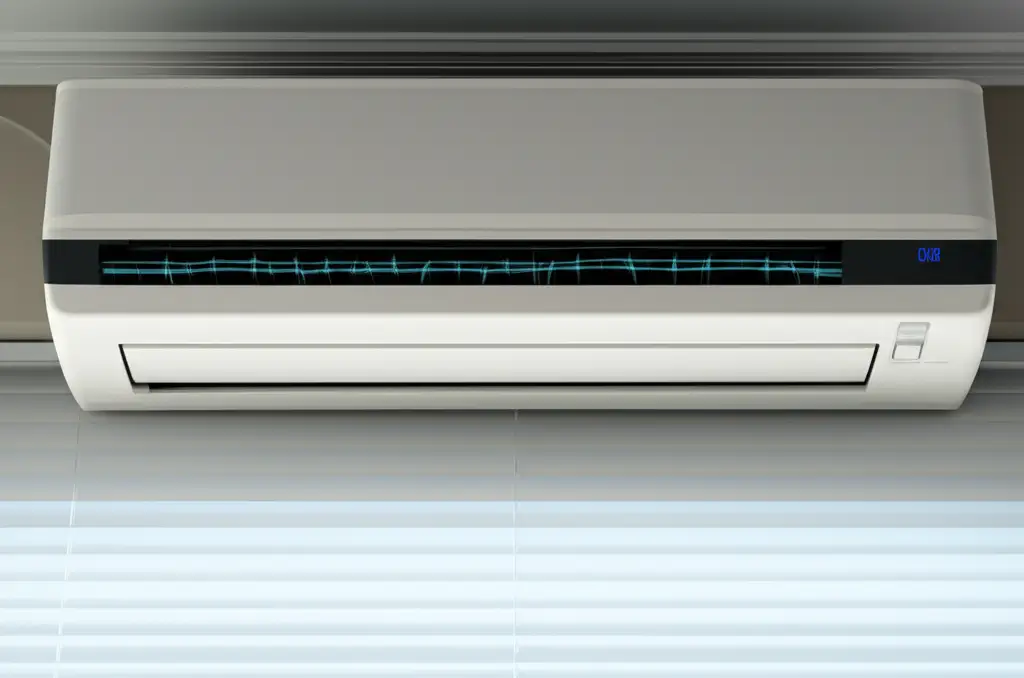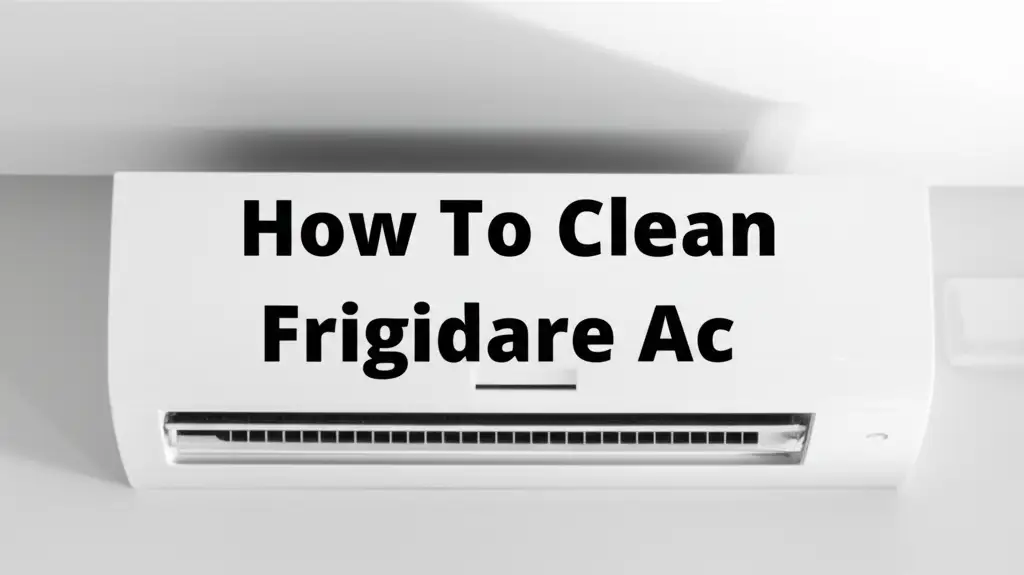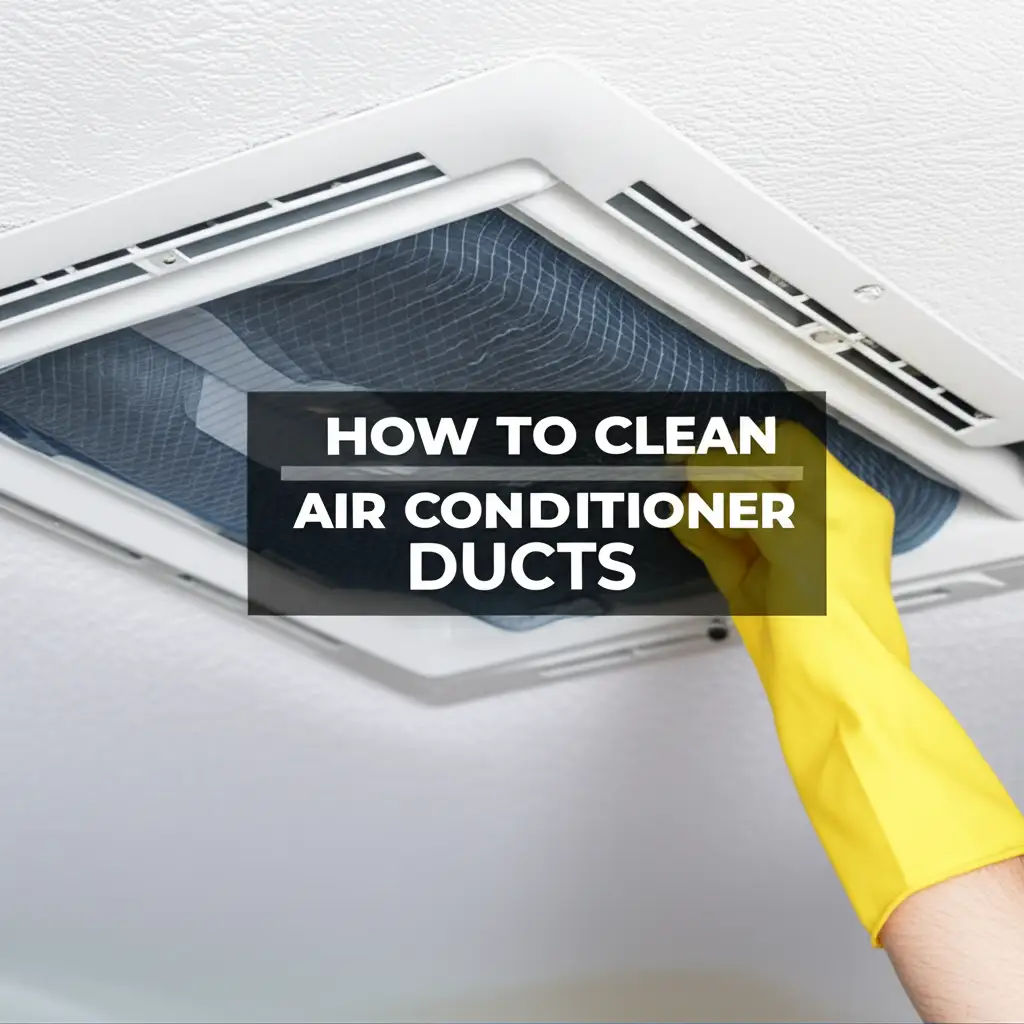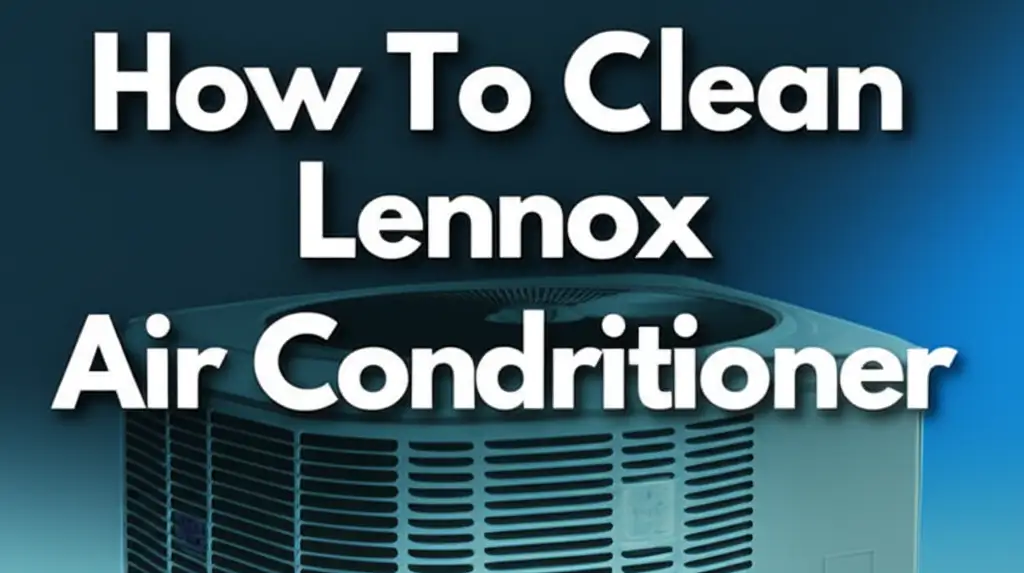· Home Maintenance · 18 min read
How To Clean Wall Ac Unit

Clean Wall AC Unit: A Comprehensive Guide
My home is my sanctuary. I want the air inside it to be clean and fresh. A dusty, inefficient air conditioner prevents that. Learning how to clean a wall AC unit makes a big difference. It improves air quality and saves energy.
Many people overlook this important task. Dust, grime, and even mold can build up inside. This reduces your unit’s cooling power. It also spreads allergens through your home.
This guide helps you clean your wall AC unit thoroughly. We will cover everything. You will learn about essential tools. We will walk through each cleaning step. By the end, you will feel confident tackling this job. Your home will feel much more comfortable.
Takeaway:
- Regular wall AC unit cleaning improves air quality and cooling efficiency.
- Gather necessary tools like screwdrivers, brushes, and coil cleaner before starting.
- Always disconnect power to the unit for safety before cleaning.
- Clean air filters regularly by washing or vacuuming them.
- Deep clean evaporator coils and blower wheels to remove hidden dirt and mold.
- Clear the condensate drain line to prevent water leaks and blockages.
- Establish a consistent cleaning schedule to maintain peak performance and extend unit life.
To clean a wall AC unit, first turn off the power. Then, remove and wash the air filters. Use a specialized coil cleaner on the evaporator fins. Gently clean the blower fan and wheel with a brush. Clear the condensate drain line to prevent blockages. Finally, wipe down the exterior and reassemble the unit.
Why Clean Your Wall AC Unit? Benefits of Regular Maintenance
Cleaning your wall AC unit offers many benefits. It is not just about aesthetics. A clean unit works better and lasts longer. This saves you money in the long run. I always think about the positive impact a clean unit has on my home.
First, a clean AC unit provides better air quality. Dust, pollen, and pet dander collect on filters and coils. These particles then blow into your living space. This can worsen allergies or respiratory issues. Regular cleaning removes these airborne irritants. My family breathes easier when the air is fresh.
Second, cleaning boosts your unit’s energy efficiency. A dirty AC unit works harder to cool your room. Dirt on coils acts as an insulator. This means the unit needs more power to reach the desired temperature. More power means higher electricity bills. Cleaning the components allows air to flow freely. This helps the unit cool your home with less effort. It reduces energy consumption significantly.
Third, regular cleaning prevents costly repairs. Dirt and debris can damage internal components. Clogged drain lines cause water leaks. This can lead to mold growth and structural damage. Overworked motors and compressors wear out faster. A simple cleaning routine extends the lifespan of your unit. It helps you avoid expensive professional service calls.
Finally, cleaning removes odors. Mold and mildew often grow inside damp AC units. This creates a musty smell in your home. Cleaning these areas eliminates the source of the odor. Your home smells fresh and clean. This makes the living environment more pleasant. It is truly worth the effort.
Essential Tools and Safety Preparation for Wall AC Cleaning
Before you start cleaning, gather all your tools. Having everything ready saves time and effort. Safety is also very important. I always make sure I am prepared before tackling any home project. This prevents accidents and makes the job smoother.
First, here is a list of the tools and supplies you will need:
- Screwdriver set: Phillips and flathead, to open the unit casing.
- Vacuum cleaner: With a brush attachment, for dry dust and debris.
- Soft brush: Such as a toothbrush or small paintbrush, for delicate areas.
- Fin comb: To straighten bent coil fins (optional but helpful).
- Coil cleaner: A specialized non-rinse foaming cleaner for evaporator coils. You can find this at hardware stores.
- Bleach or white vinegar: For cleaning mold and sanitizing the drain line.
- Spray bottle: For water or cleaning solutions.
- Microfiber cloths or rags: For wiping surfaces.
- Bucket: To catch water or cleaning solutions.
- Old toothbrush or bottle brush: For cleaning the blower wheel.
- Drop cloth or old towels: To protect your floor and furniture.
- Safety glasses and gloves: To protect your eyes and hands from chemicals and dust.
- Flashlight: To see into dark areas inside the unit.
Next, prioritize safety. This step is non-negotiable. Never work on an electrical appliance without cutting off its power. I always go to the circuit breaker panel. Locate the breaker that controls your AC unit. Flip it to the “OFF” position. This ensures no electricity reaches the unit while you work. You might also unplug the unit if it has a direct plug.
Place a drop cloth or old towels on the floor. Position it directly under the wall AC unit. This protects your flooring from dust, dirt, and any water drips. Cleaning can get messy. This simple step saves you from extra clean-up later. Wearing safety glasses protects your eyes from dust and cleaning solutions. Gloves protect your hands from dirt and chemicals. With your tools ready and safety measures in place, you are now set to begin the cleaning process.
Cleaning the Air Filters: Your First Step to Cleaner Air
Cleaning the air filters is the easiest and most frequent task. It is the first thing I do when starting AC maintenance. Dirty filters restrict airflow. They make your unit work harder. Clean filters let your AC breathe properly.
Most wall AC units have a front panel that opens up. Look for latches or clips on the sides or bottom. Gently pull the panel open. It might swing upwards or detach completely. Inside, you will see one or more mesh filters. These are usually thin, rectangular pieces. They slide into slots.
Carefully slide each filter out. Handle them gently to avoid damaging the mesh. Now, inspect the filters. They are probably covered in a layer of dust, hair, and lint. This visible dirt tells you why cleaning is so important. These particles stop airflow and reduce cooling.
There are two main ways to clean filters:
- Vacuuming: For light dust, use a vacuum cleaner with a brush attachment. Gently run the vacuum over both sides of the filter. This removes loose debris.
- Washing: For heavily soiled filters, washing is best. Take the filters to a sink or outdoors. Rinse them under cool, running water. You can use a mild detergent or dish soap if they are very greasy. Gently rub the filter with your hands or a soft brush. Make sure to remove all visible dirt. Rinse them thoroughly until the water runs clear.
After washing, shake off excess water. Lay the filters flat on a clean towel. Let them air dry completely. Do not put wet filters back into the AC unit. This can lead to mold growth. Make sure they are bone dry. This might take a few hours. Once dry, slide the clean filters back into their slots. Close the front panel securely. This simple step alone improves your air quality and unit efficiency significantly. I clean my filters every 2-4 weeks during heavy use.
Deep Cleaning the Evaporator Coils and Fins
After cleaning the filters, the next important step is deep cleaning the evaporator coils. These coils get cold and absorb heat from your room. Dust and grime can build up on them. This dirt prevents efficient heat transfer. It also creates a breeding ground for mold. This is a critical step for your unit’s performance.
To access the coils, you often need to remove more parts. This might involve unscrewing the front cover or other internal components. Refer to your unit’s manual if you are unsure. Once the cover is off, you will see rows of thin, metallic fins. These are the evaporator coils. They look like a radiator. Be very careful. The fins are delicate and bend easily.
First, use a soft brush or a vacuum cleaner with a brush attachment. Gently brush away any loose dust or debris from the coil fins. Work from top to bottom. Do not press too hard. You want to remove surface dirt without bending the fins. If some fins are bent, you can use a fin comb to carefully straighten them. This tool helps airflow through the coils.
Next, it is time for the coil cleaner. Use a specialized non-rinse foaming coil cleaner. I prefer these because they break down dirt and drip away without needing water rinsing. Follow the product instructions carefully. Typically, you spray the foam directly onto the coils. Ensure good coverage. The foam will expand, loosen dirt, and then condense into liquid. This liquid drips into the drain pan below. Allow the cleaner to sit for the recommended time. It dissolves grime and kills mold. If you suspect significant mold growth, learn more about how to clean mold from AC unit.
After the cleaner has done its job, some dirt may remain. You can gently wipe the coils with a damp cloth. Make sure not to leave any standing water. Allow the coils to air dry completely before proceeding. A clean coil improves cooling performance. It also helps maintain healthy indoor air. This deep cleaning makes a huge difference in how your AC performs.
Cleaning the Blower Fan and Wheel: Eliminating Dust Buildup
The blower fan, often called the blower wheel, is a vital part of your wall AC unit. It pushes cool air into your room. Over time, this fan accumulates a lot of dust and grime. This buildup looks like a thick layer of fuzzy dirt. It significantly reduces airflow. A dirty blower wheel means your AC struggles to move air. This is a common culprit for weak airflow and poor cooling.
Accessing the blower wheel can be tricky. It is usually located at the bottom or back of the evaporator coils. You might need to remove more screws and panels. Some units allow easier access than others. A flashlight helps you see inside the dark cavity. The blower wheel is typically a long, cylindrical component with many small fins or blades. These blades catch and hold dust. This creates a fluffy, dirty mass that looks like a furry animal inside your AC.
To clean the blower wheel:
- Preparation: Place old towels or a drop cloth underneath the unit. This catches falling dirt. Put on your safety glasses and gloves.
- Initial Cleaning: Use a vacuum cleaner with a narrow nozzle or brush attachment. Try to vacuum as much loose dust as possible from the blower wheel blades. Rotate the wheel manually to reach all parts.
- Deep Cleaning: For stubborn grime, use a stiff brush. An old toothbrush or a bottle brush works well. Dip the brush in a solution of warm water and a little mild detergent. Alternatively, you can use a diluted coil cleaner. Carefully scrub each blade of the blower wheel. Rotate the wheel as you work to clean all sides. You will see the dirt loosening and falling off. If you prefer to clean the AC blower wheel without removing it, find more tips here: how to clean AC blower wheel without removing.
- Wipe Down: Use a damp microfiber cloth to wipe down the cleaned blades. Make sure to remove any remaining dirt or cleaning solution. Be gentle to avoid bending the blades.
- Drying: Allow the blower wheel to air dry completely. You can use a dry cloth to speed up the process. Ensure no moisture remains before reassembling the unit.
Cleaning the blower wheel dramatically improves airflow. It helps your unit cool your space more effectively. It also prevents the spread of dust and allergens. This step is often overlooked but crucial for peak performance.
Clearing the Condensate Drain Line: Preventing Water Leaks and Mold
The condensate drain line is a small, but very important, part of your wall AC unit. As your AC cools, it removes moisture from the air. This moisture condenses into water. It collects in a drain pan. Then, it flows out through the drain line. If this line gets clogged, water backs up. This can cause leaks inside your home. It can also lead to mold growth. I always make sure to check this line during cleaning.
First, locate the drain pan. It sits directly under the evaporator coils. You might need to remove more panels to see it clearly. The drain line is a small plastic tube. It connects to the drain pan. This tube usually runs to the outside of your home. Sometimes, it connects to a household drain.
Common causes of blockages are algae, mold, and sludge. These grow in the damp environment of the drain line. They form a slimy plug. This plug prevents water from draining properly. When the pan overflows, you get a leak. This can damage walls, floors, and furniture.
To clear the drain line:
- Initial Inspection: Look into the drain pan. Check for standing water or slime. If you see water, the line is likely blocked.
- Vacuuming: If the drain line has an accessible opening outside, you can use a wet/dry vacuum. Place the vacuum hose tightly over the end of the drain line. Turn on the vacuum. This creates suction. It can pull out the blockage.
- Pouring Solution: You can pour a cleaning solution into the drain pan.
- Bleach Solution: Mix one cup of household bleach with two cups of warm water. Slowly pour this mixture into the drain pan. The bleach kills algae and mold. It also breaks down sludge. Let it sit for 15-30 minutes. If you want to know more about using bleach for this task, refer to how to clean AC drain line with bleach.
- Vinegar Solution: For a milder, non-toxic option, use undiluted white vinegar. Pour about one cup of white vinegar into the drain pan. Vinegar effectively kills mold and algae. It is also environmentally friendly.
- Flushing: After letting the solution sit, flush the drain line with plain water. Pour a few cups of clean water into the drain pan. This rinses out the loosened debris and cleaning solution. You should see water flowing freely out of the drain line’s exit point.
- Pipe Cleaner/Brush: If the blockage is stubborn and accessible, you might carefully use a flexible pipe cleaner or a thin wire. Gently push it through the drain opening in the pan. This helps break up the clog. For specific tips on clearing split AC drain pipes, check out how to clean split AC drain pipe.
A clear drain line is essential for proper AC operation. It prevents water damage and mold issues. I make sure this step is done thoroughly.
Final Steps and Regular Maintenance Schedule for Your Wall AC Unit
You have cleaned the filters, coils, blower, and drain line. Now it is time to put everything back together. These final steps ensure your unit is ready to run efficiently. Establishing a regular maintenance schedule helps keep your AC in top shape. I always finish a cleaning job by making sure everything is secure and ready.
Reassembly:
- Replace Components: Carefully reattach any panels, covers, or screws you removed. Make sure everything fits snugly. Do not force anything.
- Check Filters: Double-check that your clean, dry filters are properly reinserted. They should slide smoothly into their slots.
- Clean Exterior: Wipe down the exterior casing of the wall AC unit. Use a damp cloth to remove any dust or fingerprints. This makes the unit look clean and fresh. Avoid harsh chemicals on the plastic casing.
- Restore Power: Go back to your circuit breaker panel. Flip the breaker for your AC unit back to the “ON” position. If you unplugged the unit, plug it back in.
- Test Run: Turn on your wall AC unit. Set it to a low temperature and high fan speed. Listen for any unusual noises. Feel for strong, cool airflow. Check for any leaks. The unit should run smoothly and quietly.
Regular Maintenance Schedule: Maintaining your wall AC unit regularly prevents major issues. It keeps your air clean and your energy bills low. Here is a schedule I follow:
- Monthly (during cooling season):
- Clean the air filters. This is the most frequent task. Dirty filters quickly restrict airflow.
- Wipe down the exterior casing. This keeps the unit looking good and prevents dust buildup on the surface.
- Annually (before cooling season starts):
- Perform a deep clean of the evaporator coils. Use a coil cleaner to remove grime.
- Clean the blower fan and wheel. This prevents significant dust accumulation.
- Clear the condensate drain line. This avoids water leaks and mold growth.
- Check for any signs of mold inside the unit. Address it immediately if found.
- Inspect electrical connections for any loose wires. If you are not comfortable with electrical work, call a professional.
Following this schedule keeps your wall AC unit running efficiently. It extends its lifespan. You enjoy cleaner air and lower energy costs. Regular care is an investment in your home comfort. It also prevents unexpected breakdowns when you need your AC most.
Troubleshooting Common Wall AC Cleaning Issues
Even after a thorough cleaning, you might encounter some issues. Don’t worry. Many problems have simple solutions. I have run into a few things myself and found ways to fix them. Knowing what to look for helps.
Issue 1: Musty Smell After Cleaning A lingering musty smell often means mold or mildew remains.
- Check Coils and Drain Pan: Re-inspect the evaporator coils and drain pan. Mold can hide in hard-to-reach spots. Use a flashlight to get a good look.
- Drain Line Reclean: The drain line might still have algae or mold buildup. Pour another dose of bleach or vinegar solution through it. Make sure it flushes clear.
- Anti-mold Treatments: Consider using an AC pan tablet or spray. These products prevent mold growth in the drain pan and line.
- Professional Help: If the smell persists, professional cleaning might be needed. Mold can sometimes get into insulation or other inaccessible parts.
Issue 2: Unit Still Not Cooling Effectively If your AC cleaned unit isn’t cooling well, cleaning might not have addressed the root cause.
- Check Airflow: Ensure nothing blocks the air intake or output vents.
- Re-inspect Filters: Make sure the filters are completely dry and correctly installed. A damp filter can hinder performance.
- Coil Cleanliness: Verify the evaporator coils are truly clean. Sometimes stubborn grime needs a second application of coil cleaner.
- Refrigerant Levels: Low refrigerant is a common cause of poor cooling. This is a job for a professional. Do not try to add refrigerant yourself.
- Other Component Failure: A faulty compressor, fan motor, or thermostat can affect cooling. These require professional diagnosis and repair.
Issue 3: Water Leaking After Cleaning Water leaks typically point back to the drain system.
- Drain Line Clog: The most common cause is a re-clogged or incompletely cleared drain line. Re-check the drain line and flush it thoroughly again. Ensure water flows out freely.
- Incorrect Drain Line Slope: The drain line needs a slight downward slope. If it sags or is angled upwards, water cannot drain. Adjust its position if possible.
- Cracked Drain Pan: Inspect the drain pan for cracks. If the pan itself is broken, it needs replacement.
- Condensate Pump Issue: Some units use a condensate pump. If the pump fails, water will back up. This requires professional repair or replacement.
Always re-check the basics first. Power off the unit before any inspection or recleaning. If problems persist after troubleshooting, contact a qualified HVAC technician. They can diagnose complex issues safely.
FAQ Section
How often should I clean my wall AC unit?
I recommend cleaning the air filters every 2-4 weeks during heavy use. A deep cleaning of the coils, blower wheel, and drain line should be done annually. Do this before the cooling season starts. This schedule keeps your unit working well and prevents problems.
Can I use water to clean my wall AC unit?
Yes, you can use water to rinse filters and clean some plastic parts. However, avoid spraying water directly onto electrical components. Use specialized foaming coil cleaners for the coils. These often do not require rinsing with water. Always ensure all parts are completely dry before reassembling.
What if my wall AC unit still smells after cleaning?
A lingering smell usually means mold or mildew. Re-inspect the coils and drain pan for hidden growth. Flush the drain line again thoroughly. Consider using anti-mold treatments for the drain pan. If the smell persists, call a professional. They can check hard-to-reach areas for deeper mold issues.
Is professional AC cleaning necessary?
For most routine cleaning, you can do it yourself. However, professional cleaning might be necessary for very stubborn mold, refrigerant issues, or complex internal repairs. I recommend professional service every few years. This ensures a complete inspection and deep cleaning of components you cannot reach.
What are the signs my wall AC needs cleaning?
Common signs include weak airflow, a musty odor, increased energy bills, or visible dust and dirt on the unit’s exterior or filter. You might also notice dripping water or strange noises. If your unit is struggling to cool your room, cleaning is often the first step to fix it.
Conclusion
Taking the time to learn how to clean a wall AC unit provides many rewards. It is more than just a chore. It is an investment in your home’s comfort and efficiency. We covered all the key steps. You learned about preparing safely. We went through cleaning filters, coils, and the crucial blower wheel. You also learned how to clear the drain line and reassemble your unit.
A clean wall AC unit delivers crisp, cool air. It also improves your indoor air quality. This means fewer allergens and better breathing for everyone. By keeping your unit free of dirt and grime, you also boost its energy efficiency. This directly translates into lower electricity bills. Furthermore, regular cleaning prevents costly breakdowns. It extends the overall life of your appliance.
I encourage you to make this a regular part of your home maintenance routine. You now have the knowledge and steps to do it effectively. Embrace the benefits of a well-maintained system. Enjoy cleaner air, save money, and prolong the life of your wall AC unit. Your home, and your wallet, will thank you.
- AC cleaning
- wall unit maintenance
- mini-split care
- HVAC efficiency
- indoor air quality




